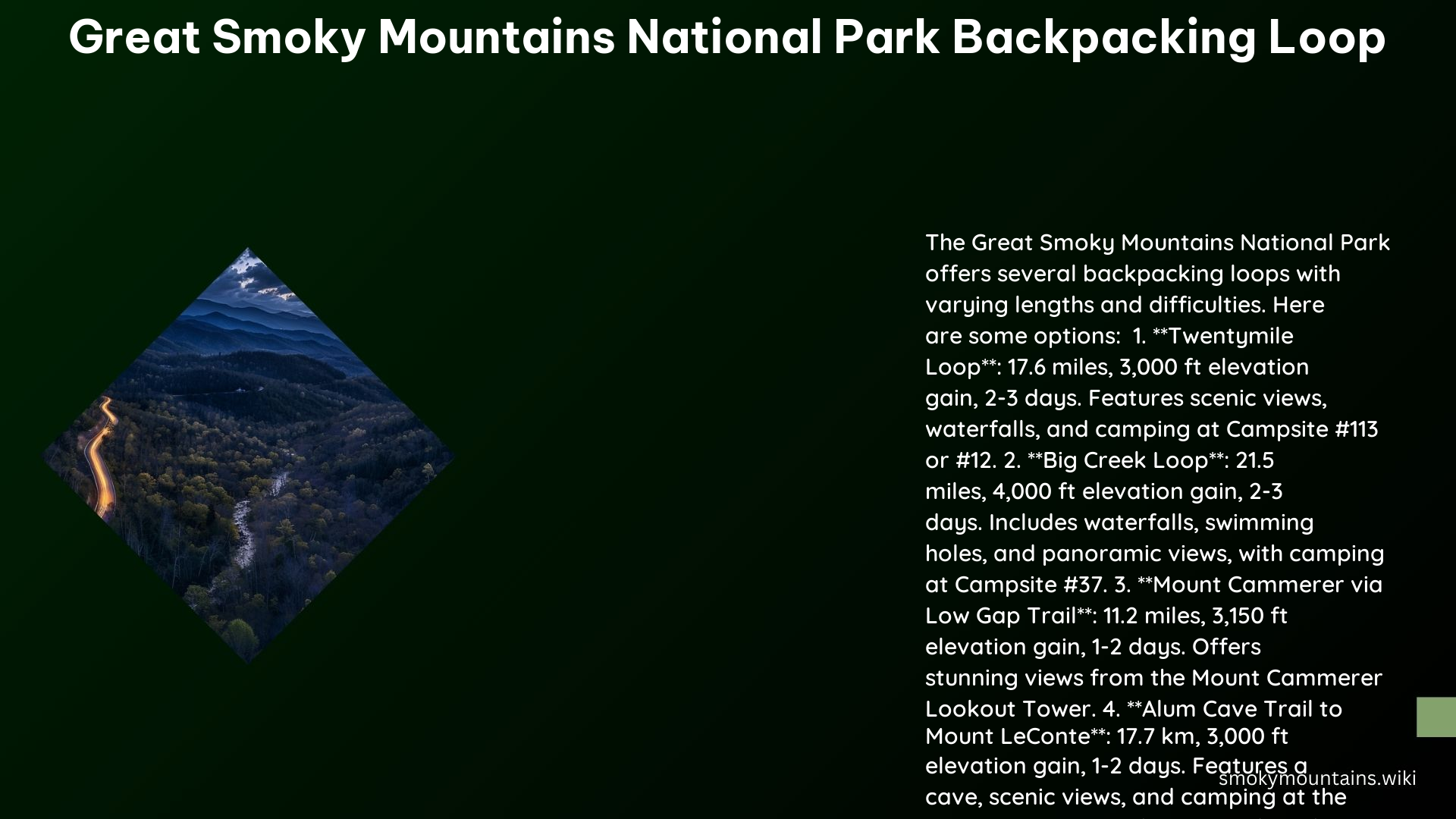Exploring the majestic Great Smoky Mountains National Park on a backpacking adventure is a truly unforgettable experience. Whether you’re a seasoned hiker or a newcomer to the world of backcountry trekking, the park offers a variety of loop options that cater to different skill levels and interests. In this comprehensive guide, we’ll dive into the details of three exceptional Great Smoky Mountains National Park Backpacking Loop options, equipping you with the information you need to plan your next outdoor odyssey.
The Tricorner Loop

The Tricorner Loop is a popular choice among backpackers in the Great Smoky Mountains National Park. This 21.5-mile loop offers a diverse range of landscapes, from lush forests to stunning mountain vistas. Starting at the Cosby Campground, you’ll ascend the Snake Den Ridge Trail to the Appalachian Trail (AT), where you’ll head southwest towards the Balsam Mountain Trail intersection and the Tricorner Knob shelter. From there, you’ll continue on the Balsam Mountain Trail to the Benton MacKaye Trail (BMT) and the Laurel Gap shelter. The loop then takes you along the BMT to the Swallow Fork Trail and Low Gap Trail, before reconnecting with the AT and returning to the Cosby Campground. Along the way, you’ll have the opportunity to take a side trip to the summit of Mount Cammerer for breathtaking panoramic views.
The Big Creek Loop

The Big Creek Loop is a 17.6-mile backpacking route that showcases the park’s natural beauty. Starting at the Big Creek trailhead, you’ll hike up Mount Sterling via the Chestnut Branch Trail and Appalachian Trail. Descending to the Low Gap Trail, you’ll reach Campsite #37 before continuing on the Swallow Falls Trail to the Mount Sterling Ridge Trail and back to the Big Creek trailhead. This loop offers a mix of challenging ascents, serene forests, and the chance to witness the stunning Swallow Falls.
The Twentymile Loop
The Twentymile Loop is a 19.5-mile backpacking adventure that takes you through some of the park’s most scenic areas. Beginning at the Twentymile Ranger Station, you’ll hike to the Appalachian Trail at Sassafras Gap and camp at Campsite #113 at Birch Spring Gap. From there, you’ll continue on the Appalachian Trail to the Shuckstack Fire Tower and then to the Gregory Bald Trail, where you’ll camp at Campsite #12 near Gregory Bald. The loop concludes with a descent via the Wolf Ridge Trail back to the trailhead.
Key Details
To ensure a safe and enjoyable backpacking experience in the Great Smoky Mountains National Park, here are some key details to keep in mind:
| Detail | Requirement |
|---|---|
| Permits | Obtain a General Backcountry Permit for non-Appalachian Trail backpacking trips, or an Appalachian Trail Thru-Hiker Backcountry Permit for Appalachian Trail thru-hikers. |
| Campsites | Make advance reservations for backcountry campsites or shelters, which are the only designated camping areas in the park. |
| Weather | Be prepared for rapidly changing weather conditions, especially in March, which is the most volatile weather month in the park. |
| Elevation Gains | Expect significant elevation gains on these loops, ranging from 3,000 to 3,150 feet. |
| Trail Lengths | The loops range from approximately 17.6 to 21.5 miles. |
Remember, the Great Smoky Mountains National Park is a vast and diverse wilderness, so it’s essential to plan your backpacking trip thoroughly, pack the necessary gear, and familiarize yourself with the park’s rules and regulations. By doing so, you’ll be able to fully immerse yourself in the natural beauty and create unforgettable memories on the trail.
